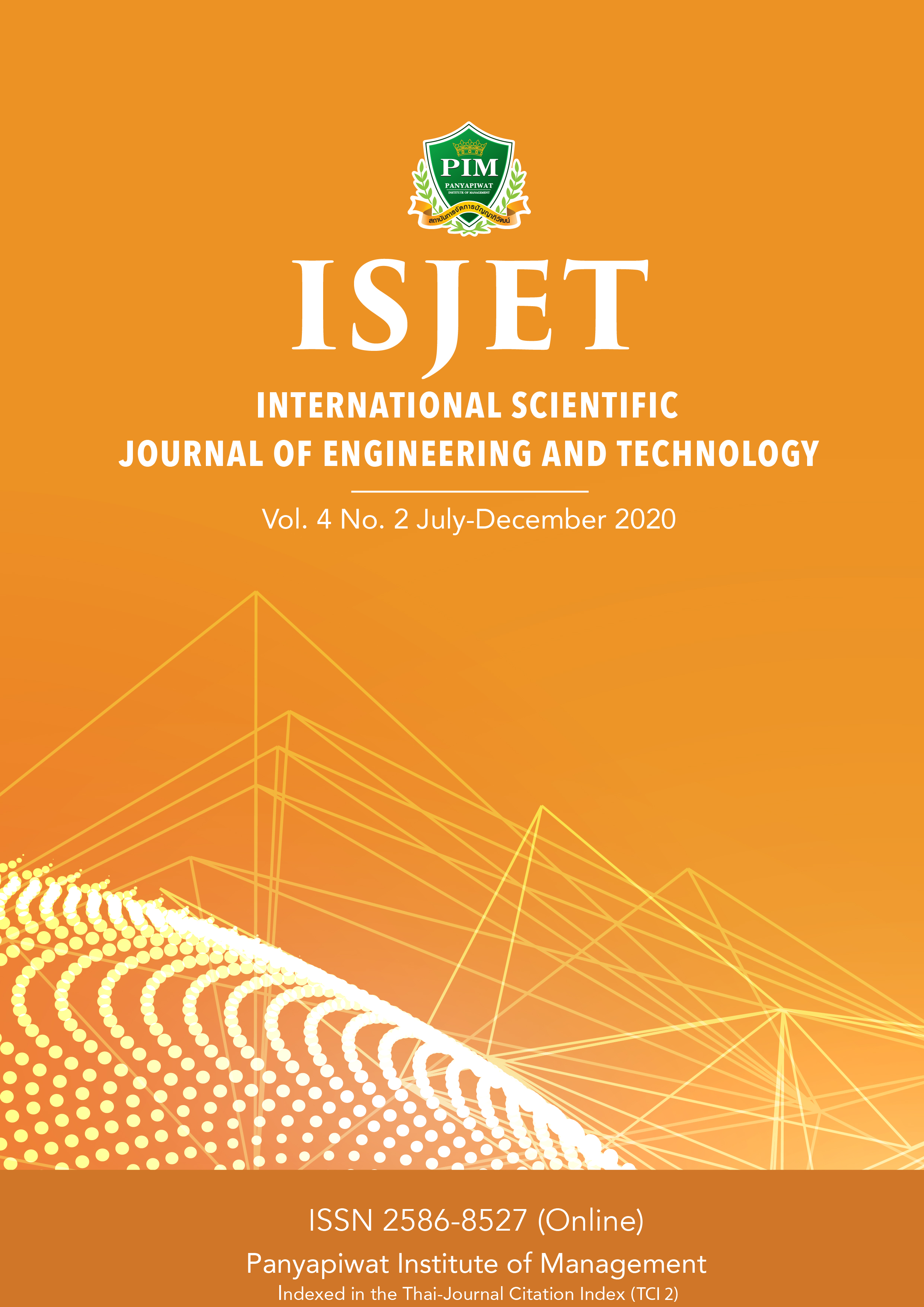A Steel Tube Production Planning and Scheduling with Product-dependent Changeover Time Using Digital Twin
Main Article Content
Abstract
Steel tube manufacturing industry is one of heavy industry that use a lot of labor, large and heavy machineries, intense capital, and high technologies. The production planning and scheduling of steel tube manufacturing is complicated because of a long tool setup time and machine conditions. Moreover, there are half-thousands of different finished goods. In order to produce efficiently and maximize machine utilization, this paper proposes a digital twin of steel tube production process focus on forming process. The digital twin could be used for planning and scheduling to manage complexity of machinery setup, priorities production, fulfil inventory without shortage and to conduct what-if analysis and compares for the scenarios of different schedules. The digital twin provides production model simulating precise production total time, tool setup time, number of products and production deadline. The simulation model is tested with forty-nine products on three identical machines with their tool setup time. It reduces the production planning time of the planning engineer and provides accurate schedule of each product.
Article Details

This work is licensed under a Creative Commons Attribution-NonCommercial-NoDerivatives 4.0 International License.
เนื้อหาข้อมูล
References
E. Glaessgen and D. Stargel, “The digital twin paradigm for future NASA and US Air Force vehicles,” in Proc. 53rd AIAA/ASME/ASCE/AHS/ASC Structures, Structural Dynamics and Materials Conference 20th AIAA/ASME/AHS Adaptive Structures Conference 14th AIAA, 2012, pp. 1818.
Q. Qi and F. J. I. A. Tao, “Digital twin and big data towards smart manufacturing and industry 4.0: 360 degree comparison,” IEEE Access, vol. 6, pp. 3585-3593, Aug. 2018.
R. Rosen, G. Von Wichert, G. Lo et al., “About the importance of autonomy and digital twins for the future of manufacturing,” in Proc. FAC-PapersOnLine, 2015, pp. 567-572.
Y. Lu et al., “Digital Twin-driven smart manufacturing: Connotation, reference model, applications and research issues,” Robotics and Computer-Integrated Manufacturing, vol. 61, pp. 101837, Jul. 2020.
H. Hibino, T. Inukai, and Y. Fukuda, “Efficient manufacturing system implementation based on combination between real and virtual factory,” International Journal of Production Research, vol, 44, no. 18-19, pp. 3897-3915, Sep. 2006.
F. Tao and M. J. I. A. Zhang, “Digital twin shop-floor: a new shop-floor paradigm towards smart manufacturing,” IEEE Access, vol. 5, pp. 20418-20427, Sep. 2017.
M. Kunath and H. J. P. C. Winkler, “Integrating the Digital Twin of the manufacturing system into a decision support system for improving the order management process,” in Proc. Procedia CIRP, 2018, pp. 225-231.
M. Wiktorsson, S. D. Noh, M. Bellgran et al., “Smart Factories: South Korean and Swedish examples on manufacturing settings,” in Proc. Procedia Manufacturing, 2018, pp. 471-478.
H. Peters, “How could Industry 4.0 transform the steel industry,” in Proc. Future Steel Forum. Warsaw: Steel Times International, 2017, pp. 1-22.
P. Appelqvist and J. Lehtonen, “Combining optimisation and simulation for steel production scheduling,” Journal of Manufacturing Technology Management, vol. 16, no. 2, pp. 197-210, Mar. 2005.
S. Melouk, N. Freeman, D. Miller et al., “Simulationoptimi- zation-based decision support tool for steel manufacturing,” International Journal of Production Economics, vol. 141, no. 1, pp. 269-276, Jan. 2013.
L. Li and J. Huo, “Multi-objective flexible job-shop scheduling problem in steel tubes production,” System Engineering- Theory & Practice, vol. 29, no. 8, pp. 117-126, Aug. 2009.
L. Tang and L. Huang, “Optimal and near-optimal algorithms to rolling batch scheduling for seamless steel tube production,” International Journal of Production Economics, vol. 105, no. 2, pp. 357-371, Feb. 2007.


